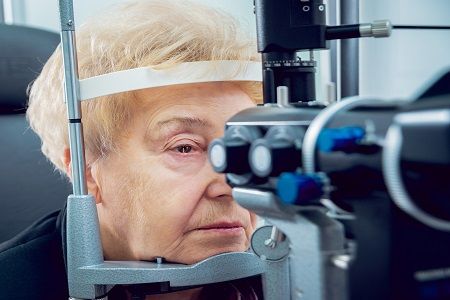OCT CST Accounts for Small Portion of Changes in Visual Acuity
An analysis of more than 650 eyes find that optical coherence tomography central subfield thickness accounts for only a small proportion of total variation in changes in visual acuity.

A recent study is challenging the notion of using optical coherence tomography (OCT) central subfield thickness (CST) as a reliable means of determining changes in visual acuity (VA).
After examining more than 650 eyes for 104 weeks, investigators found that changes in CST account for only a small portion of the total variation in changes in VA.
Investigators enrolled 660 participants from 89 clinical sites across the US between Aug. 22, 2012 and Sept. 23, 2015. All participants in the study were 18 or older, had type 1 or type 2 diabetes, and had at least 1 eye with a best-corrected Electronic Early Treatment Diabetic Retinopathy Study VA letter score of 78 through 24.
A total of 652 eyes were included in the analysis. Of those 652, 221 (33.9%) eyes were given aflibercept 2mg, 216 (33.1%) eyes were given bevacizumab 1.25mg, and 215 (33.0%) eyes were given ranibizumab 0.3mg. Women represented 304 of the 652 eyes, median age of participants was 61 years, 65.3% of participants were white, and 92.3% had type 2 diabetes.
At baseline, the mean VA letter score was 65.0 (20/50) letters and mean CST was 459 μm. Investigators noted that the Pearson correlation coefficient for the association between VA and OCT CST at baseline was 0.36 (95% CI, 0.30-0.34) and the slope of regression indicated 3.2 letters increased VA for every 100-μm decrease in OCT CST.
After analyses, investigators found the the correlation between CST and VA was 0.24 (95% CI, 0.16-0.31) at the 12-week visit, 0.31 (95% CI, 0.24-0.38) at the 52-week visit, and 0.23 (95% CI, 0.15-0.31) at the 104-week visit. At weeks 12, 52, and 104, when all treatment groups were combined, the mean changes in OCT CST were -1−115.1 (121.2) μm at week 12, −137.7 (129.4) μm at week 52, and −147.5 (136.7) μm at week 104. Mean VA letter score changes were 8.3 (8.7) letters at 12 weeks, 11.3 (10.2) letters at 52 weeks, and 11.7 (11.5) letters at 104 weeks.
The correlation coefficients of changes in VA compared to changes in OCT CST at week 12 was 0.36 (95% CI, 0.29-0.43), at week 52 the correlation coefficient was 0.36 (95% CI, 0.29-0.43), and at week 104 it was 0.33 (95% CI, 0.26-0.41).
Within their conclusion, investigators wrote that changes in CST appeared to account for just a small amount of the total variation in changes in VA. Furthermore, the findings of the study support the idea that OCT CST changes are not a reliable guide to determining changes in VA with anti-VEGF treatment for an individual eye.
In an invited commentary, Sapna Gangaputra, MD, MPH, and Paul Sternberg Jr., MD, both of Vanderbilt University, wrote that the study highlights the need for new surrogate markers for diabetic macular edema.
“Many in clinical practice use OCT changes to drive clinical decision-making with the presumption that this will drive improvement in vision quality, which should be the primary goal of care,” Gangaputra and Sternberg Jr. wrote. “However, the authors point out that this may not be the case in DME and, in fact, we still have not identified a single objective test that is easy to administer, quick, noninvasive, and repeatable that also correlates closely with changes in visual function.”
This study, titled “Association Between Change in Visual Acuity and Change in Central Subfield Thickness During Treatment of Diabetic Macular Edema in Participants Randomized to Aflibercept, Bevacizumab, or Ranibizumab,” is published in JAMA Ophthalmology.